Librarian and data manager George Christian is served with a
so-called “National Security Letter” (NSL) from the FBI
demanding that his firm turn over private information on its patrons
because of an apparent terrorist threat e-mailed from one of his
libraries (see February 2005). Christian is the executive director
of Library Connection, Inc., which manages catalog information,
patron records, and circulation information for 27 libraries in and
around Hartford, Connecticut, as well as providing
telecommunications services to many of its member libraries.
Christian is given the NSL, as well as a gag order preventing them
from ever mentioning their receipt of the letter, or any details
surrounding it. Christian is notified of the letter five days before actually receiving it; he spends those days frantically
learning more about NSLs and the laws surrounding them (see October
25, 2005). He learns that a district court in New York had found the
entire NSL statute unconstitutional because of what Christian calls
“prima facie violations of the 1st, 4th and 5th amendments.” By
the time they receive the letter, he has decided to oppose it. The
letter, delivered by two FBI agents, orders Christian and Library
Connection to turn over information about a specific IP address
registered to the firm. One of the agents warns Christian that the
gag order prohibits anyone in the firm from telling anyone that the
FBI is attempting to secure information from its library business
records. Christian, who will testify before the Senate Judiciary
Committee about the NSL in April 2007 (see April 11, 2007), says
neither he nor his colleagues could “fathom any ‘exigent’
nature for the FBI request.” The letter was dated May 19, nearly
two months before its delivery, was not addressed to Christian, and
requested information from the use of the IP address five months
earlier, February 15. Christian later says that while he and his
colleagues want to assist the FBI in any way they can, and have no
desire to “impede the investigation of a perilous situation that
endanger[s] my country or my fellow citizens,” because of the date
of the letter and the IP usage, they conclude that the FBI has not
been in any rush to get the information. Christian tells the FBI
agents that he believes the use of NSLs is unconstitutional and that
he will consult his attorney. Library Connection’s attorney says
that the only way to contest compliance with an NSL is to take the
Attorney General, Alberto Gonzales, to court. Christian is
understandably reluctant to involve his firm in such a court
challenge without authorization, and takes the case to the Executive
Committee of the firm’s board of directors. The three members,
Barbara Bailey, Peter Chase, and Janet Nocek (who will soon be
dubbed the “Connecticut Four” by the media), after conferring
with the attorney and reviewing the New York court’s decision
against NSLs, decide to go forward with the complaint. They secure
representation from the American Civil Liberties Union (ACLU).
Together, they decide to ask for relief from the NSL, to seek a
broader ruling that the use of NSLs is unconstitutional, and to have
the gag order lifted so they can publicly discuss the incident as
“part of the national debate over renewal of the Patriot Act”
(see March 9, 2006). Christian will tell the Senate Judiciary
Committee, “We… felt we were defending our democracy by
insisting that the checks and balances established in the
Constitution be observed. We had no court order, and there was no
evidence that an independent judge had examined the FBI’s evidence
and found there to be probable cause justifying their request for
information.… [W]e did not want to aid terrorists or criminals.…
But we did not feel we would be helping the country or making anyone
safer by throwing out the Constitution either.” Because of the way
the computer system is set up, to give the FBI the information about
the specific IP address and usage it required, Christian would have
to give the FBI information about everyone using every computer in
the particular library on the day in question. He later says, “[S]ince
there was no way of determining who was using the computers in the
library five months after the fact, we felt that [the FBI wanted]
information we had on all the patrons of that library. That seemed
like a rather sweeping request. Some would call it a fishing
expedition.” The case goes to trial in August 2005 (see August
2005-May 2006). [Senate Judiciary Committee, 4/11/2007] It is later
learned that the original e-mailed threat is a hoax. [USA Today,
7/6/2006] Entity Tags: Peter Chase, National Security Letters,
Senate Judiciary Committee, Library Connection, Inc., Barbara
Bailey, George Christian, American Civil Liberties Union, Janet
Nocek, Alberto R. Gonzales, Federal Bureau of Investigation,
Connecticut Four
days before actually receiving it; he spends those days frantically
learning more about NSLs and the laws surrounding them (see October
25, 2005). He learns that a district court in New York had found the
entire NSL statute unconstitutional because of what Christian calls
“prima facie violations of the 1st, 4th and 5th amendments.” By
the time they receive the letter, he has decided to oppose it. The
letter, delivered by two FBI agents, orders Christian and Library
Connection to turn over information about a specific IP address
registered to the firm. One of the agents warns Christian that the
gag order prohibits anyone in the firm from telling anyone that the
FBI is attempting to secure information from its library business
records. Christian, who will testify before the Senate Judiciary
Committee about the NSL in April 2007 (see April 11, 2007), says
neither he nor his colleagues could “fathom any ‘exigent’
nature for the FBI request.” The letter was dated May 19, nearly
two months before its delivery, was not addressed to Christian, and
requested information from the use of the IP address five months
earlier, February 15. Christian later says that while he and his
colleagues want to assist the FBI in any way they can, and have no
desire to “impede the investigation of a perilous situation that
endanger[s] my country or my fellow citizens,” because of the date
of the letter and the IP usage, they conclude that the FBI has not
been in any rush to get the information. Christian tells the FBI
agents that he believes the use of NSLs is unconstitutional and that
he will consult his attorney. Library Connection’s attorney says
that the only way to contest compliance with an NSL is to take the
Attorney General, Alberto Gonzales, to court. Christian is
understandably reluctant to involve his firm in such a court
challenge without authorization, and takes the case to the Executive
Committee of the firm’s board of directors. The three members,
Barbara Bailey, Peter Chase, and Janet Nocek (who will soon be
dubbed the “Connecticut Four” by the media), after conferring
with the attorney and reviewing the New York court’s decision
against NSLs, decide to go forward with the complaint. They secure
representation from the American Civil Liberties Union (ACLU).
Together, they decide to ask for relief from the NSL, to seek a
broader ruling that the use of NSLs is unconstitutional, and to have
the gag order lifted so they can publicly discuss the incident as
“part of the national debate over renewal of the Patriot Act”
(see March 9, 2006). Christian will tell the Senate Judiciary
Committee, “We… felt we were defending our democracy by
insisting that the checks and balances established in the
Constitution be observed. We had no court order, and there was no
evidence that an independent judge had examined the FBI’s evidence
and found there to be probable cause justifying their request for
information.… [W]e did not want to aid terrorists or criminals.…
But we did not feel we would be helping the country or making anyone
safer by throwing out the Constitution either.” Because of the way
the computer system is set up, to give the FBI the information about
the specific IP address and usage it required, Christian would have
to give the FBI information about everyone using every computer in
the particular library on the day in question. He later says, “[S]ince
there was no way of determining who was using the computers in the
library five months after the fact, we felt that [the FBI wanted]
information we had on all the patrons of that library. That seemed
like a rather sweeping request. Some would call it a fishing
expedition.” The case goes to trial in August 2005 (see August
2005-May 2006). [Senate Judiciary Committee, 4/11/2007] It is later
learned that the original e-mailed threat is a hoax. [USA Today,
7/6/2006] Entity Tags: Peter Chase, National Security Letters,
Senate Judiciary Committee, Library Connection, Inc., Barbara
Bailey, George Christian, American Civil Liberties Union, Janet
Nocek, Alberto R. Gonzales, Federal Bureau of Investigation,
Connecticut Four |
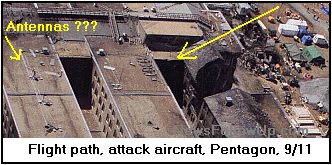

 days before actually receiving it; he spends those days frantically
learning more about NSLs and the laws surrounding them (see October
25, 2005). He learns that a district court in New York had found the
entire NSL statute unconstitutional because of what Christian calls
“prima facie violations of the 1st, 4th and 5th amendments.” By
the time they receive the letter, he has decided to oppose it. The
letter, delivered by two FBI agents, orders Christian and Library
Connection to turn over information about a specific IP address
registered to the firm. One of the agents warns Christian that the
gag order prohibits anyone in the firm from telling anyone that the
FBI is attempting to secure information from its library business
records. Christian, who will testify before the Senate Judiciary
Committee about the NSL in April 2007 (see April 11, 2007), says
neither he nor his colleagues could “fathom any ‘exigent’
nature for the FBI request.” The letter was dated May 19, nearly
two months before its delivery, was not addressed to Christian, and
requested information from the use of the IP address five months
earlier, February 15. Christian later says that while he and his
colleagues want to assist the FBI in any way they can, and have no
desire to “impede the investigation of a perilous situation that
endanger[s] my country or my fellow citizens,” because of the date
of the letter and the IP usage, they conclude that the FBI has not
been in any rush to get the information. Christian tells the FBI
agents that he believes the use of NSLs is unconstitutional and that
he will consult his attorney. Library Connection’s attorney says
that the only way to contest compliance with an NSL is to take the
Attorney General, Alberto Gonzales, to court. Christian is
understandably reluctant to involve his firm in such a court
challenge without authorization, and takes the case to the Executive
Committee of the firm’s board of directors. The three members,
Barbara Bailey, Peter Chase, and Janet Nocek (who will soon be
dubbed the “Connecticut Four” by the media), after conferring
with the attorney and reviewing the New York court’s decision
against NSLs, decide to go forward with the complaint. They secure
representation from the American Civil Liberties Union (ACLU).
Together, they decide to ask for relief from the NSL, to seek a
broader ruling that the use of NSLs is unconstitutional, and to have
the gag order lifted so they can publicly discuss the incident as
“part of the national debate over renewal of the Patriot Act”
(see March 9, 2006). Christian will tell the Senate Judiciary
Committee, “We… felt we were defending our democracy by
insisting that the checks and balances established in the
Constitution be observed. We had no court order, and there was no
evidence that an independent judge had examined the FBI’s evidence
and found there to be probable cause justifying their request for
information.… [W]e did not want to aid terrorists or criminals.…
But we did not feel we would be helping the country or making anyone
safer by throwing out the Constitution either.” Because of the way
the computer system is set up, to give the FBI the information about
the specific IP address and usage it required, Christian would have
to give the FBI information about everyone using every computer in
the particular library on the day in question. He later says, “[S]ince
there was no way of determining who was using the computers in the
library five months after the fact, we felt that [the FBI wanted]
information we had on all the patrons of that library. That seemed
like a rather sweeping request. Some would call it a fishing
expedition.” The case goes to trial in August 2005 (see August
2005-May 2006). [Senate Judiciary Committee, 4/11/2007] It is later
learned that the original e-mailed threat is a hoax. [USA Today,
7/6/2006] Entity Tags: Peter Chase, National Security Letters,
Senate Judiciary Committee, Library Connection, Inc., Barbara
Bailey, George Christian, American Civil Liberties Union, Janet
Nocek, Alberto R. Gonzales, Federal Bureau of Investigation,
Connecticut Four
days before actually receiving it; he spends those days frantically
learning more about NSLs and the laws surrounding them (see October
25, 2005). He learns that a district court in New York had found the
entire NSL statute unconstitutional because of what Christian calls
“prima facie violations of the 1st, 4th and 5th amendments.” By
the time they receive the letter, he has decided to oppose it. The
letter, delivered by two FBI agents, orders Christian and Library
Connection to turn over information about a specific IP address
registered to the firm. One of the agents warns Christian that the
gag order prohibits anyone in the firm from telling anyone that the
FBI is attempting to secure information from its library business
records. Christian, who will testify before the Senate Judiciary
Committee about the NSL in April 2007 (see April 11, 2007), says
neither he nor his colleagues could “fathom any ‘exigent’
nature for the FBI request.” The letter was dated May 19, nearly
two months before its delivery, was not addressed to Christian, and
requested information from the use of the IP address five months
earlier, February 15. Christian later says that while he and his
colleagues want to assist the FBI in any way they can, and have no
desire to “impede the investigation of a perilous situation that
endanger[s] my country or my fellow citizens,” because of the date
of the letter and the IP usage, they conclude that the FBI has not
been in any rush to get the information. Christian tells the FBI
agents that he believes the use of NSLs is unconstitutional and that
he will consult his attorney. Library Connection’s attorney says
that the only way to contest compliance with an NSL is to take the
Attorney General, Alberto Gonzales, to court. Christian is
understandably reluctant to involve his firm in such a court
challenge without authorization, and takes the case to the Executive
Committee of the firm’s board of directors. The three members,
Barbara Bailey, Peter Chase, and Janet Nocek (who will soon be
dubbed the “Connecticut Four” by the media), after conferring
with the attorney and reviewing the New York court’s decision
against NSLs, decide to go forward with the complaint. They secure
representation from the American Civil Liberties Union (ACLU).
Together, they decide to ask for relief from the NSL, to seek a
broader ruling that the use of NSLs is unconstitutional, and to have
the gag order lifted so they can publicly discuss the incident as
“part of the national debate over renewal of the Patriot Act”
(see March 9, 2006). Christian will tell the Senate Judiciary
Committee, “We… felt we were defending our democracy by
insisting that the checks and balances established in the
Constitution be observed. We had no court order, and there was no
evidence that an independent judge had examined the FBI’s evidence
and found there to be probable cause justifying their request for
information.… [W]e did not want to aid terrorists or criminals.…
But we did not feel we would be helping the country or making anyone
safer by throwing out the Constitution either.” Because of the way
the computer system is set up, to give the FBI the information about
the specific IP address and usage it required, Christian would have
to give the FBI information about everyone using every computer in
the particular library on the day in question. He later says, “[S]ince
there was no way of determining who was using the computers in the
library five months after the fact, we felt that [the FBI wanted]
information we had on all the patrons of that library. That seemed
like a rather sweeping request. Some would call it a fishing
expedition.” The case goes to trial in August 2005 (see August
2005-May 2006). [Senate Judiciary Committee, 4/11/2007] It is later
learned that the original e-mailed threat is a hoax. [USA Today,
7/6/2006] Entity Tags: Peter Chase, National Security Letters,
Senate Judiciary Committee, Library Connection, Inc., Barbara
Bailey, George Christian, American Civil Liberties Union, Janet
Nocek, Alberto R. Gonzales, Federal Bureau of Investigation,
Connecticut Four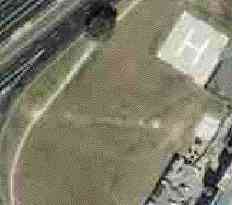
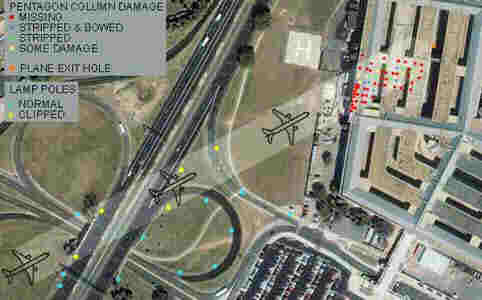
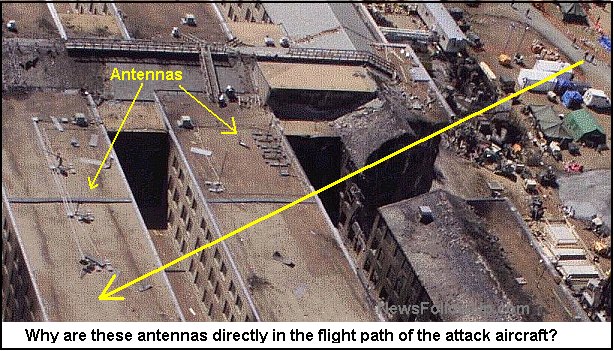






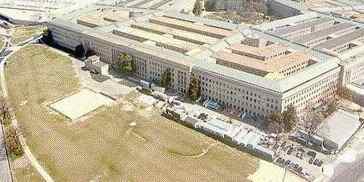

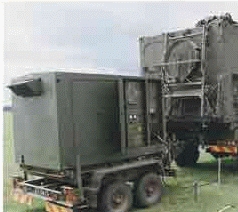 Example
of Instrument
Landing System components. source:
Example
of Instrument
Landing System components. source: 
